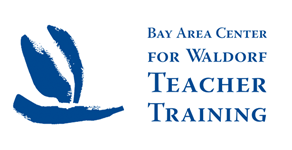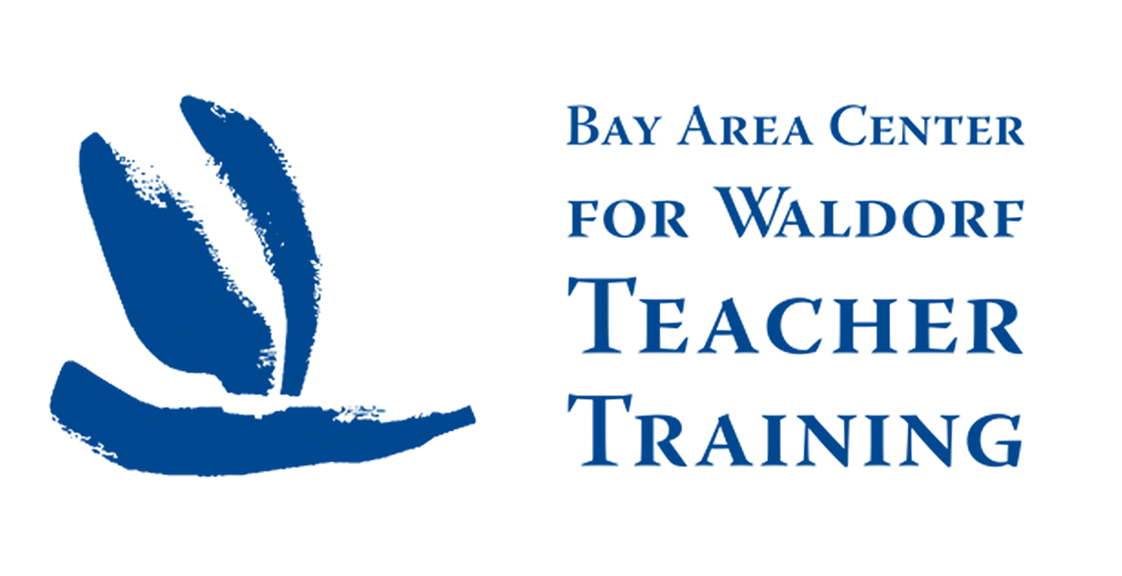Dear BACWTT Students, Alumni, Friends and Colleagues,
Here is the Calendar of the Soul, looking back over the past week.
Calendar of the Soul
Verse 31
English
The light from Spirit depths
Sun-like, it outward strives;
It becomes life’s will power
And shines within the senses’ dullness
To free the forces that let ripen
Creative might from the soul’s impulses
In all the work of humankind.
Mandarin
光从灵魂深处射出
像太阳之光,势不可挡
它成为生命的愿力
驱散感官的无趣
以此释放的能量
让心灵创造的原始冲动
在人类的作为中得以实现
Spanish
La luz de lo profundo del espíritu,
Se empeña en salir como sol:
Cambia a fuerza de voluntad de la vida
E irradia su luz en la obscuridad de los sentidos,
Para dar luz a poderes que,
Fuerzas formativas provenientes del poder del alma
Maduraran en el trabajo de los hombres.
There is a turning point this week as the light strives outwards. Last week, the will was not so explicitly expressed but this week, we can feel that the verse is filled with expressions of the will. And we can hear that this will force is being directed towards a certain activity: the senses.
A pathway of activity is being described:
Inner light rays… Into the senses… Which are dull… Freeing forces… That can now be creative… For works that are for the good of humankind.
When we work with the Calendar of the Soul verses week by week, it is an opportunity to examine our experiences and to ask, “Is that true for me? Do I feel that?” Sometimes, it is easy to connect and, others times, it isn’t.
At those times that the thought or experience doesn’t easily match our own, I like to search around inside, asking myself if there is an area that I am asleep to in this experience. Have I had experiences this week that I didn’t value or give importance to?
In that way, we can broaden the base of things that we recognize and give credence to.
This weekend, our Foundation Studies students attended a high school workshop with Jon McAlice focusing on the inner life of the teacher. One thought Jon brought that stands out in relation to this: it is a task of the Waldorf teacher to cultivate an inner life that allows more and more of “the world” to be able to find its expression “in me.” That we realize we have “blind spots” (or whole blind zones) and that by cultivating and schooling our inner life, we may open the inner space for more and other types of experiences. That we create the possibility that more and more that is “not me” can become a part “of me.”
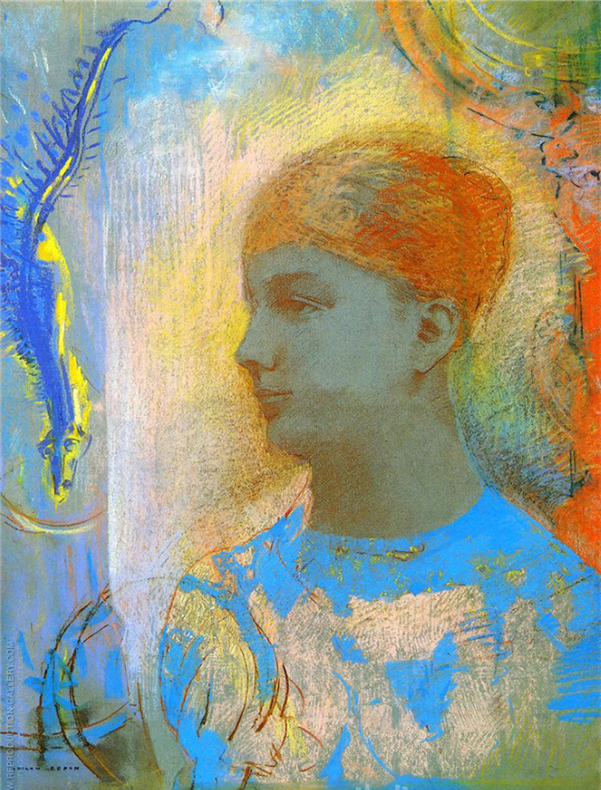
The French painter Odilon Redon created many imaginative portraits, like the one above, in which he creates the impression that there is a mysterious relationship between the outer and the inner world. The figure does not appear to be looking at any one thing, but is very awake to the surrounding movements, colors and actions. Are they being imagined, contemplated or digested? We will never know, but Redon uses the surroundings of the canvas to capture the experience of the meeting and merging of outer and inner experience.
Redon always creates a mood of calm and quietness in this type of painting. The meditative or contemplative mood allows this bridge between outer and inner to take place.
This week has been a wonderful time for us to expand our knowledge and feeling for the inter-connectedness of festivals from around the world and from different times.
This past week, Halloween (with its origins in the ancient Celtic Samhain) and the Christian All Hal-lows’ Eve have had expressions in Waldorf schools through activities such as “Pumpkin Path” or “Sprites’ Night.” Waldorf schools are very creative in finding ways to provide an experience for their communities that is a little gentler and less commercialized.
Día de los Muertos celebrations have been part of school life this last week, and is a festival moment created to remember, honor and send prayers and good thoughts for those who have passed over the threshold.
Diwali has also been a part of this week. Loveleen Dillon, Early Childhood teacher at Wildcat Canyon Community School shared these thoughts:
“As the days get darker, it’s time to fully celebrate our inner light. Deepawali, known by most as Diwali, is a 5-day festival that gets its name from the row (avali) of clay lamps (deepa). These lamps are traditionally fueled by mustard oil. Diwali always comes in the month of Kartika as per the lunar cycles on the thirteenth day which is called Astroyadashi. Traditionally, on this day, everybody worships the deity called Dhanvantari. This deity is the source of Ayurveda, science of long and healthy lives.
Festivals are meant to reflect the spiritual reality of what is happening to the Earth during certain times of the year. A festival is a joyous celebration of life that has the quality of lifting us out of the ordinary and into the mysteries and magic of the rhythm of the seasons. If we are to look at what is happening in nature during this time, one can say that there is a tendency of the body to hibernate during this time of the year. Life slows down in the Northern Hemisphere as the Earth’s relationship with the sun changes. If we were some other creature, we would curl up somewhere. But as human beings, we have transcended this biological tendency (mostly—the essence of Diwali is that, through our own purification, we can transcend the darkness that nature is bringing us).
The celebration of Diwali, in some ways, is created so we don’t slow down because this season is such. We wake up before the sun, and the first rays of the sun hit us before anything else. We engage our artistic selves by making ran-goli (beautiful forms/geometric designs to invite abundance, health, and positive energy) in our homes each day. We stay connected with family and friends. We sing and beat the drum to remain joyous. We light diyas to keep our inner light burning bright. Children delight in lighting sparklers. Preparing for this festival helps us to stay balanced and in touch with our purpose in life. It enlivens us and our community.
Families create beautiful altars and worship different deities. India is so diverse that each family has their own unique and special way to celebrate Diwali. In northern India, people celebrate the story of King Rama’s return to Ayodhya after he defeated Ravana by lighting rows of clay lamps. Southern India celebrates it as the day that Lord Krishna defeated the demon Narakasura. In western India, the festival marks the day Lord Vishnu, the Preserver, sent the demon King Bali to rule the underworld. Sikhs celebrate the return of their sixth Guru, Guru Hargobind and his 52 warriors, from imprisonment.”
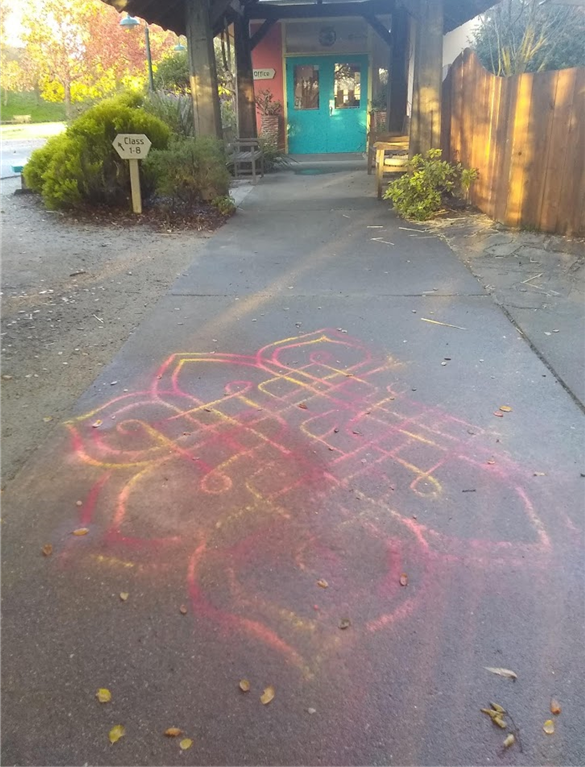
During the week, children created diyas from clay and lit candles in them, made a special effort to clean their desks and classrooms, and drew rangoli on the thresholds of their classrooms.
The festival of Diwali adds another perspective to our experience of the week—and to the other festivals that happen at this time. We can feel that there are some things in common, and other aspects that are different. The drawing of rangoli on the thresholds—the floor where we step over from the outside to the inside—is very striking and powerful; the care and attention given at this moment, to this place where we have some say in what we allow in, and what we don’t.
All of the festivals this past week support a heightened awareness of the threshold between inside and outside, between the living and the dead, between the physical and the non-physical worlds. Traditions guided people in activities that attended to these thresholds, to engage in communal activities that bring wellness and vitality, and prevent neglect or inattentiveness. We are really fortunate to be able to build a cultural life in our schools that allows the wisdom of many peoples and many traditions to shine in and guide us. The richness and depth of these festival traditions can be a balm for modern life. Our inner world is made greater through these activities, the inner thoughts and feelings they call up, the realms that they attend to, the community connections they build.
For the whole community, the festival provides an outer form and practice. For the Waldorf teacher, the meditative life provides an inner form and practice. These two things are, of course, not separate or disconnected, but it is helpful to put them side by side in this way to emphasize that they are aspects of the same thing. The Calendar of the Soul has taken us through a process of becoming more and more inward over the past weeks, and now is turning with renewed will to ray outwards. The festivals and mediations can “school” this turning moment.
During the workshop, Jon McAlice shared a teachers’ meditation given by Rudolf Steiner in 1923. Here is a translation:
Spiritual gaze,
Turn your eye inwards;
Heartfelt sensing,
Touch on delicate soul existence;
In the anticipation of the spirit gaze,
In the heartfelt sensing of the soul
Weaves conscious existence.
Conscious existence, which from above
And below of a person’s being
Ties cosmic brightness
To earth’s darkness.
Spiritual gaze,
Heartfelt sensing,
See, sense
Cosmic brightness weaving
Within the human being
In earth’s darkness holding sway:
My own
Human formative force
Producing
Strength creating
Will bearing
Self.
And here is a link to an article, “Why Waldorf Teachers Meditate” by Claus-Peter Röh (January 2019) that puts this meditation into context of the life and development of the first Waldorf school.
https://www.erziehungskunst.de/en/article/meditation/why-waldorf-teachers-meditate/
In the meditation, we find an outer description:
“Cosmic brightness weaving Within the human being In earth’s darkness holding sway:
And then an affirmation of human activity:
My own Human formative force, Strength creating, Will bearing, Self.”
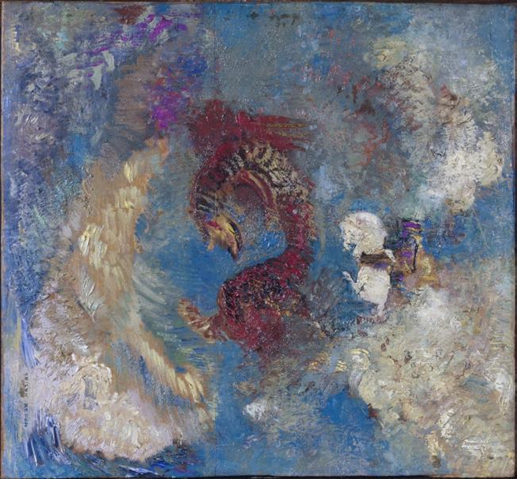
This little-known painting by Redon of a knight and horse battling a dragon is wonderful as it shakes us up and out of all the other such images we have seen or hold in our minds. There seems to be no ground—it is all swirling energy—and the horse and rider appear to be flying amongst clouds. It is a non-earthly image. In this painting and in the efforts of many modern artists, we can find the desire to awaken senses that have become dull, to renew the will in their art, to rediscover and render a direct connection to life. In a certain way, the verse this week and the teachers’ meditation is mirrored in this artistic effort to see and to give form to the world anew.
Ken
Kenneth Smith
Director, BACWTT
